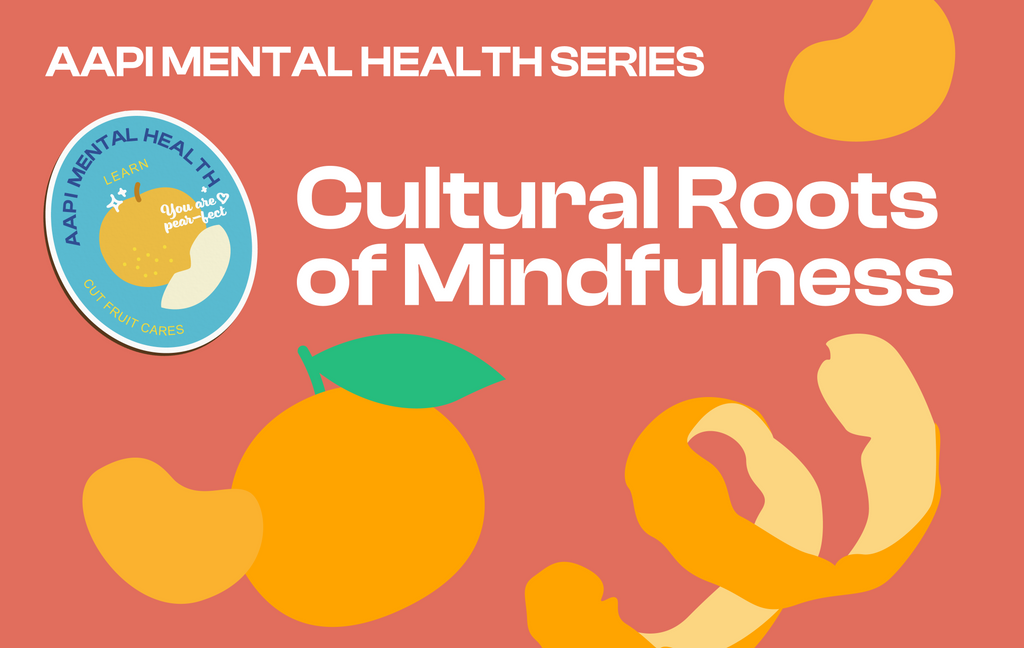Cultural Roots of Mindfulness

In honor of AAPI Heritage Month and Mental Health Awareness Month, our intern and clinical mental health counseling student Amanda will be addressing AAPI mental health topics every Monday. This week, Amanda will be diving into the cultural roots of mindfulness. If you like this series, you can show your support to Amanda here.
Mindfulness in American popular culture is a trending concept, used to encourage people to “live in the moment” and “acknowledge feelings.” However, this Western, secularized version of mindfulness actually has deep roots in many different cultures, including Asian and Pacific cultures. Though its definition varies across these cultures, there are a few common themes, such as a focus on the breath and present awareness of the body, mind, or feelings.
From the ancient Vedic concept of smrti, the practice of Zen Buddhism’s zazen, or the Native Hawaiian breathing exercise Noho Pū, examples of mindfulness abound in Asian and Pacific Islander cultures. Some examples of mindfulness concepts include:
- satipatthana in Theravada Buddhism
- arugamama in Japanese Morita Therapy
- muraqabah in Islamic tradition
In addition to helping people feel more connected to themselves and their heritage, mindfulness has many benefits. It can help foster a sense of appreciation for the present and release of worry about the future, in turn leading to greater empathy and kindness for the self and others. Studies show that mindfulness can help reduce stress, boost working memory, and even give increased immune functioning.
Western adaptations of mindfulness can be traced back to several sources, though the biggest contributor was arguably Jon Kabat-Zinn and his “Mindfulness-Based Stress Reduction” course, which would later be influential to the field of psychotherapy, specifically mindfulness-based cognitive behavioral therapy. Kabat-Zinn made teachings of mindfulness from Zen Buddhism more palatable to a Western audience by stripping it of all religious/cultural teachings or undertones.
He has stated that he “bent over backwards” to remove any “risk of [mindfulness] being seen as Buddhist, new age, eastern mysticism or just plain flakey,” which perpetuates the biased assumption that Asian and Pacific beliefs are inferior to “modern” Western practices. While it is true that no singular culture can claim ownership of the complex concept and practice of mindfulness, the intentional separation of practice from source, in this case Zen Buddhism, is part of a larger trend in the mental health field of appropriating wellness frameworks from marginalized peoples.
But engaging in mindfulness is not an inherently appropriative act. Mindfulness has always been a powerful tool for many people across many cultures, today and throughout history, in maintaining their mental, physical, emotional, and spiritual wellness. We can choose to engage in mindfulness thoughtfully and intentionally, making efforts to understand the cultural roots of the specific practice we’re interested in, especially if such practices are protected by their respective cultures.
Want to bring some more AAPI mindfulness into your life? While mindfulness can look like spending a few minutes meditating with an app, it can also look like:
- Hikitia Te Hā
- A modern Maori breathing practice
- Hatha Yoga (हठयोग)
- a branch of yoga that emphasizes breathing, posture, and mindfulness
- Pranayama (प्राणायाम)
- yogic breathing exercises
- Contemplative Kyudo (弓道)
- Japanese Archery Meditation
- Tea Ceremony (茶藝/茶道/茶禮)
- Such as Darye (Korean tea ceremony)
- Mindful eating
- such as Tangerine Meditation by the late Thich Nhat Hanh
Affirmations for AAPI:
- It is understandable to feel disconnected from appropriated wellness practices that have been stripped of their cultural elements. You have the power to reclaim them.
- Your mental health journey is your own. You can choose to engage in what works for you and leave the rest.
- As diaspora and descendants, we deserve to engage in cultural healing practices that have served our people for generations no matter how close or distant we feel from our heritage.
